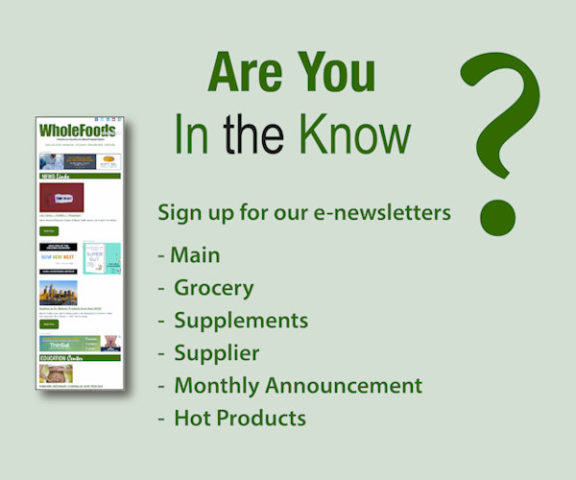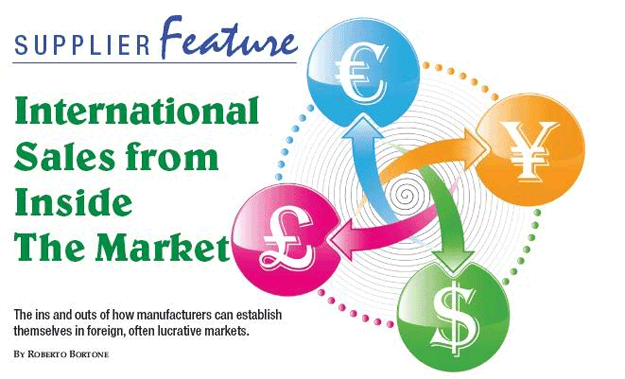As world leaders in innovation, science, technology and certainly in the application of these advancements to nutrition and health, we could certainly do much better when it comes to selling our great products in export markets. A walk through the aisles at the specialty and supermarket chains in the more developed markets of Asia would surprise you with the minimal presence of high-quality, American-made natural and organic lines. Instead, you’ll see more of other imported brands.
As a consultant living in Asia representing U.S. companies in these export markets for over 20 years, I get increasingly frustrated to see many U.S. manufacturers either ignoring these potentially lucrative markets or simply making the wrong choices in approaching them. As a manufacturer, I’m sure you’ve heard a lot about what to do in each of these export markets, but as it turns out, it may very well be what not to do rather than what to do.
The following is list of “Don’ts” when attempting to enter foreign markets.
1. DON’T tie yourself up with exclusivity agreements “unnecessarily.” As interest and consumption in the natural/organic category rapidly grow in export markets, more and more manufacturers are starting out in international sales by signing exclusive sales agreements with U.S.-based distributors and exporters, and importers in countries and territories abroad. And most of the time, the manufacturer has never even visited these countries. Typically, the company is approached either at a trade exhibit or through correspondence and is easily convinced by the “biggest” and the “top” exporter or importer that its best approach to its overseas market is through an exclusive relationship with them. Many of our industry’s largest manufacturers and brand holders limit themselves with such exclusive agreements, and often with very small players. They do so not only with U.S. exporters or importer/distributors, but often with a specific retailer in an export market—which is even more limiting. When you exclude your sales to an exporter, or even worse to one importer/retailer in an export market, you clearly limit your market share. And this is the first what not to do in international sales. So, here’s the real deal on this matter.
Know the key retailers in a target off-shore market. Don’t expect to be very successful without knowing the export market you are planning to sell to, firsthand. This information is essential in helping you decide your next step, which is whether or not to appoint an importer/distributor in that country. Now, be very careful with third-party representation. Remember, any third party clearly has its own interest in mind. Generally, a distributor will not buy from another distributor, so don’t expect much success if you tie yourself up with a U.S. distributor (exporter), as it is highly unlikely your U.S. exporter would be selling to an off-shore importer/distributor.
And, keep in mind that many of the large specialty and supermarket retail chains overseas do not import themselves, but instead rely on local importer/distributors to supply them. Again, when this is the case, it’s not likely a local importer/distributor would buy from another distributor. There are two logical reasons for this. The first simply being margin; if two distributor margins (in this case an exporter/distributor and an importer/distributor) are factored into the pricing matrix, the retails would be pushed too high. Second, an importer/distributor will always want a direct relationship with the manufacturer, and preferably an exclusive relationship.
Referring back to my earlier point, know the retailers in each market. You need to know where your products are going in regard to the retailers in an off-shore market, and not just listen to the promises of a distributor. Be careful of the “biggest and best” distributors. It’s all about sell-through and not sell-to! Generally, if a specific market has a dominant supermarket chain highlighting the natural/organic category and they import themselves, you should certainly try to sell to them directly, but not exclusively. And, if they don’t import themselves but rather buy from importers/distributors, ask them with whom they prefer to work. This will greatly help in your decision for whom to appoint as your importer/distributor for that market.
2. DON’T move forward until you have an export sales program in place, and be ready to move quickly. Just as you wouldn’t deal with a seemingly “flaky” importer, perform well right from the start, as the first impression is usually the only opportunity you’ll have to show your new customers you know what you’re doing. In international trade, a customer is almost always using ocean freight and therefore looking at three to four weeks of sailing time from Los Angeles or Oakland to Asian ports (and much longer sailing times to other ports around the world).
So with this in mind, fast order processing time is expected. A standard protocol for international sales is the “proforma invoice.” Here’s how it works best. When an order comes in, it is generally prefaced with a memo stating, “Attached [or included] herein is our P.O. D052209. Please send your proforma invoice listing only those items/quantities available for immediate shipment. From your proforma invoice, we will amend or confirm our order, arrange payment, and expect immediate delivery to our freight forwarder.”
I can’t emphasize enough how important the proforma invoice process is to the success of international trade, and how its handling will determine how you are perceived by a new off-shore account. So on the customers’ end, the aforementioned process is expected. To facilitate this on your end, you’ll either need to have invoicing software that integrates the proforma invoice process (wherein whatever is keyed in from an order is “held” until that order is either confirmed or amended) or the order would have to be invoiced. And of course, what is invoiced must be “held” (taken out of inventory) and that invoice later confirmed or amended. Again, proforma invoicing is very critical to the success of international sales.
3. DON’T be an “exporter.” You don’t need to position yourself as an exporter, as it’s really a matter of liability, and simply, your liability ends at the “ship to” point. Always invoice: FOB (your) Warehouse, or FOB Port of Departure, if you want to pay for the inland freight. If you invoice and ship the order to an off-shore Port of Destination (i.e., FOB Frankfort, Manila, Seoul, or Tokyo), you are responsible for the freight until the buyer receives it even if the buyer asks you to include the overseas freight charges in the invoice. Also, as an “exporter,” you could be responsible for documentation, labeling, import clearance, import duties, etc. An experienced importer clearly understands its responsibilities and can generally breeze through what is often a nightmare for an exporter. Sell to an Importer: FOB USA!
4. DON’T offer credit terms to an export account without insurance. Any major player in an export market, whether a direct importer/retailer or an importer/distributor supplying retail will want open credit terms and the biggest retailers will not buy from you unless you offer this. Align with a third-party payment guarantor such as the U.S. Export-Import Bank who, for a nominal fee, will insure the payment of your invoice due on insured export accounts.
5. And finally, DON’T be surprised at your success—if you’re simply knowledgeable, enthusiastic, strategic and careful. WF
Roberto Bortone is an international trade consultant based in Manila, Philippines and can be contacted at abollano@gmail.com.
Published in WholeFoods Magazine, Nov. 2009










